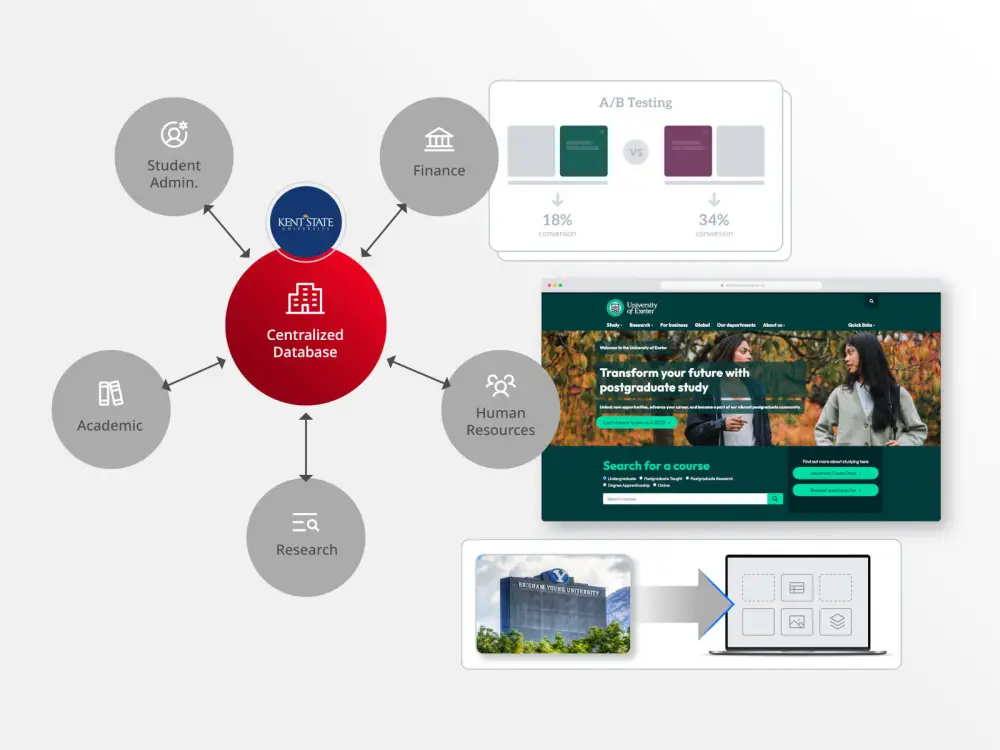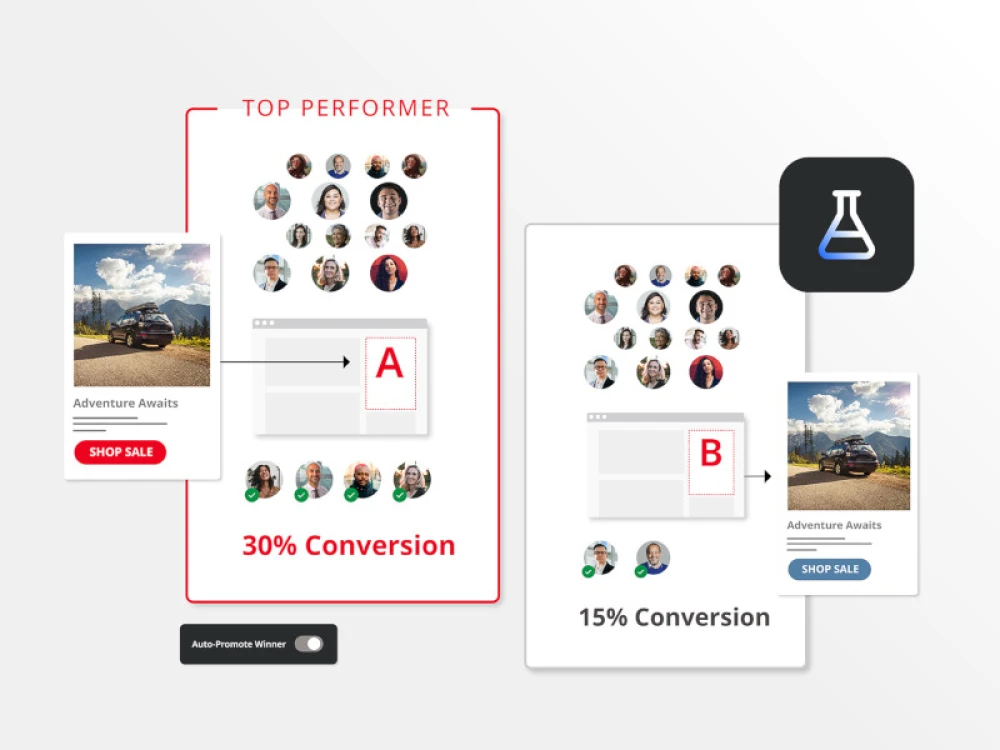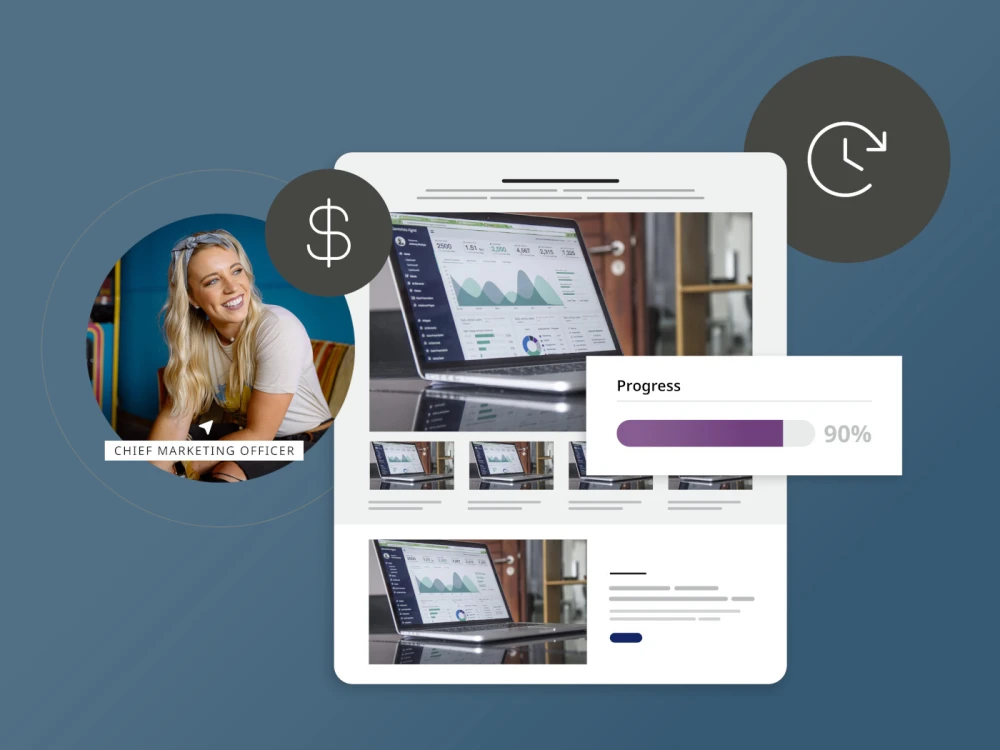There is no question that a business’s website speaks volumes about the quality of the products and services it provides. In fact, typically, visitors take less than one second to form an opinion of the quality of a website when first coming to a home or landing page. Providing content to customers and users that proves not only valuable, but also consistent, with your brand helps to build and maintain a positive image, increase visibility and exposure across important channels, and reinforce messaging that boosts engagement.
In order to achieve these things, a critical aspect of a strong website in addition to the content itself, is the way that content is mapped to guide your customers and users on a journey. What previously was considered a linear path from a product page or article immediately through to checkout or continued browsing on your site is now layered with multiple touchpoints and opportunities to keep, or lose, people. As such, utilizing content mapping to create clear paths for customers to follow is crucial in order for them to reach the intended message, product or service your business is hoping to share.
The impact of mapping website content to the customer journey
What once was considered a “traditional” customer journey is no longer—access to information now seems limitless, meaning people are inclined to spend more time researching products or services before making decisions about whether or not they buy from or engage with your site. This creates a need for digital and communications teams to ensure that every piece of content on a brand or publisher’s website is not only intentional, but clear in conveying information to people to help inform decisions.
One of the most powerful benefits of implementing a strong content map on your website is the enhanced customer experience it creates. By clearly mapping how customers are intended to travel through a website, businesses are able to identify the specific points in a customer’s journey where intended actions take place, as well as where visitors decide to leave the site. Leveraging these insights to better construct certain pages and content, or determine where to link new information to keep a customer’s attention, will ultimately lead to a more engaging website.
Specifically for brands, a study from Oberlo found that 63 percent of shoppers begin the buying journey online, particularly because it makes it easier to comparison shop. Creating a content map with this in mind helps to ensure you provide the right information about products and services at every step of the journey so that customers are not expected to spend unnecessary time searching for information before taking action. When assets such as product details and positive reviews from other customers are clearly displayed on the appropriate pages, the likelihood that a customer will leave your site and purchase or engage elsewhere is minimized.
The second key benefit of a strong content map for brands is increased sales. According to a survey conducted by the Content Marketing Institute, 61 percent of shoppers will proceed with purchases after first reading blog content supporting the product or service. Through effective and thoughtful content mapping, businesses can provide access points to relevant blog posts to help further build a level of trust throughout the buying journey, and lead customers to ultimately decide to purchase.
Publishers, too, strongly benefit from effective content mapping. For many publishers, the majority of the traffic that comes to their website is through an article. This means that a publisher needs to treat their article page almost like its own website or homepage so that they can turn that visit into multiple pageviews; otherwise, the user will arrive at the information that initially interested them—the article— and quickly abandon site after reading rather than staying longer to check out additional content. In this scenario, content mapping is how you take that interest in the article’s topic and translate it into interest in the publisher’s brand.
What content mapping looks like with Brightspot
Implementing a platform like Brightspot to better inform your content mapping strategy allows for teams to spend more time creating the content that provides value to customers. Several major benefits of content mapping through Brightspot include:
- Speed: Brightspot offers a seamless experience where businesses do not need to make advanced coding updates to content at every step of the mapping process. Users can adjust the flow of specific pages, fields, links and more while working simultaneously on other pages or pieces of content, without being interrupted.
- Flexibility: Publishers can extend or enhance modules with ease to better map content to the customer journey. For example, if a publisher wanted to take modules from the homepage (a news headlines section, photos, social feed, etc.) and add them to an article page, those modules can easily be lifted without requiring additional publishing effort to push content to different sections of the site. Brightspot allows you to publish once and distribute to as many end points as you can define, making it easy to better map article pages so that visitors engage with your content longer.
- Delegation: Brightspot makes it easy to designate specific tasks to certain people across teams, streamlining the process of creating content, adjusting the content map and launching it live to customers. Delegation capabilities also reduce the need for extensive revisions and delayed approval processes, as it is clear at each step of the content process who appropriate owners are for various pieces of a project.
- Interactivity: Brightspot allows users to provide feedback on specific pieces of a site at any point, making real-time adjustments more feasible for developers and other contributors. An update or revision that may have taken days, or even weeks, to address previously can be done in minutes.
- Article Enhancement: Content mapping through Brightspot follows a publisher’s natural workflows. Any asset created such as a blog post, photo gallery, image, or a video in the platform becomes available to the editor when building out new pieces of content. This dramatically cuts down the time it takes to produce new assets, and also supports a rich experience for users where they’re encouraged to stay on a website after finishing an article and engage with the next piece of content on the page.
The customer journey will continue to shift across businesses with the introduction of new competitors and as more sources of information become available, but with the use of a platform like Brightspot, it is now easier than ever before to make real-time changes to your content to address these shifts. Creating a content map that takes customers from point A to point B is no longer enough, reinforcing the need for fresh insights and valuable detail to be made available on your business’s website every step of the way.










